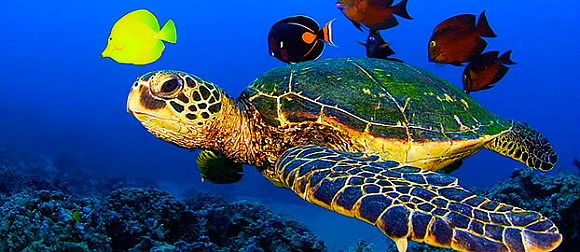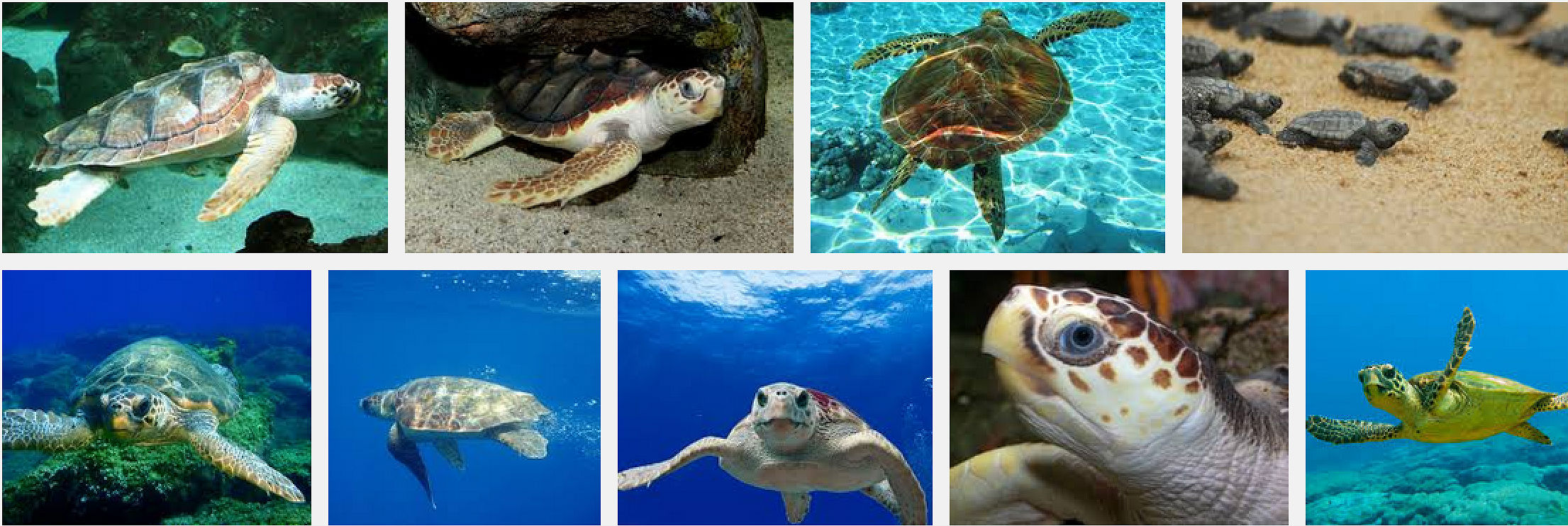The Loggerhead Sea Turtle (Caretta Caretta) is the world’s largest hard-shelled turtle and the only surviving member of the genus Caretta.That is why their name is REPEATED. The genus name “Caretta” is a latinization of the French “caret”, meaning turtle or sea turtle.
The turtle is characterized by a large head (when compared to other species of marine turtles) with blunt jaws. It is also identifiable by the five scutes along the middle of the carapace . Adults grow to an average weight of about 200 pounds(100 kg) and can reach 1 mt in length. The species feeds on crab, crustaceans, fish , and other marine animals, which they crush with their large and powerful jaw. As with other sea turtles, females return to lay their eggs on or the same beach where they hatched. Unlike other sea turtles, courtship and mating usually do not take place near the nesting beach, but rather along the migration routes between feeding and breeding grounds.
In the Mediterranean, Loggerheads mate from April to early June. The female nesting season is at its peak at the end of June and July, but this depends on the nesting beach. The clutch may vary from 90 to 126 eggs. Each egg is about the size and shape of a ping-pong ball. . The eggs incubate for between 45 and 65 days. When they hatch, the young turtles move quickly to the water before the sunrise or crab or birds will eat them. The average interval between nesting seasons is 2 to 3 years. Loggerheads live most of their life in open water. They may spend time on the ocean floor. The inshore waters are their main foraging habitat. Most loggerheads that reach adulthood live for longer than 16-20 years, and can often live past 50 years.
The loggerhead is widely distributed within its range. It may be found hundreds of miles out to sea, as well as in inshore areas such as bays, lagoons, salt marshes, creeks, ship channels, and the mouths of large rivers (eg the Dalyan delta). Coral reefs, rocky places, and ship wrecks are often used as feeding areas. Loggerheads nest on Mediterrenean beaches and occasionally on estuarine shorelines with suitable sand.
So if you want to find the best beaches, follow them. Nests are typically made between the high tide line and the dune front. Threats include loss or degradation of nesting habitat from coastal development and beach armoring, disorientation of hatchlings by beachfront lighting, excessive nest predation by native and non-native predators, degradation of foraging habitat, marine pollution debris, watercraft strikes, disease and commercial trawling, long-line, and gill net fisheries.
What we can do for protection to Caretta Caretta Turtles
- Do not go to the beach at night May 15 till September 15.
- Do not bring your dogs to the beaches where carettas lay eggs,
- Do not litter the rivers or sea,
- Do not leave your belongings on the beach at night.
- Do not dig the sand, touch the eggs or set up unbrellas.
- Do not lay towels above the eggs in the day time as this may cause temperature-change.


